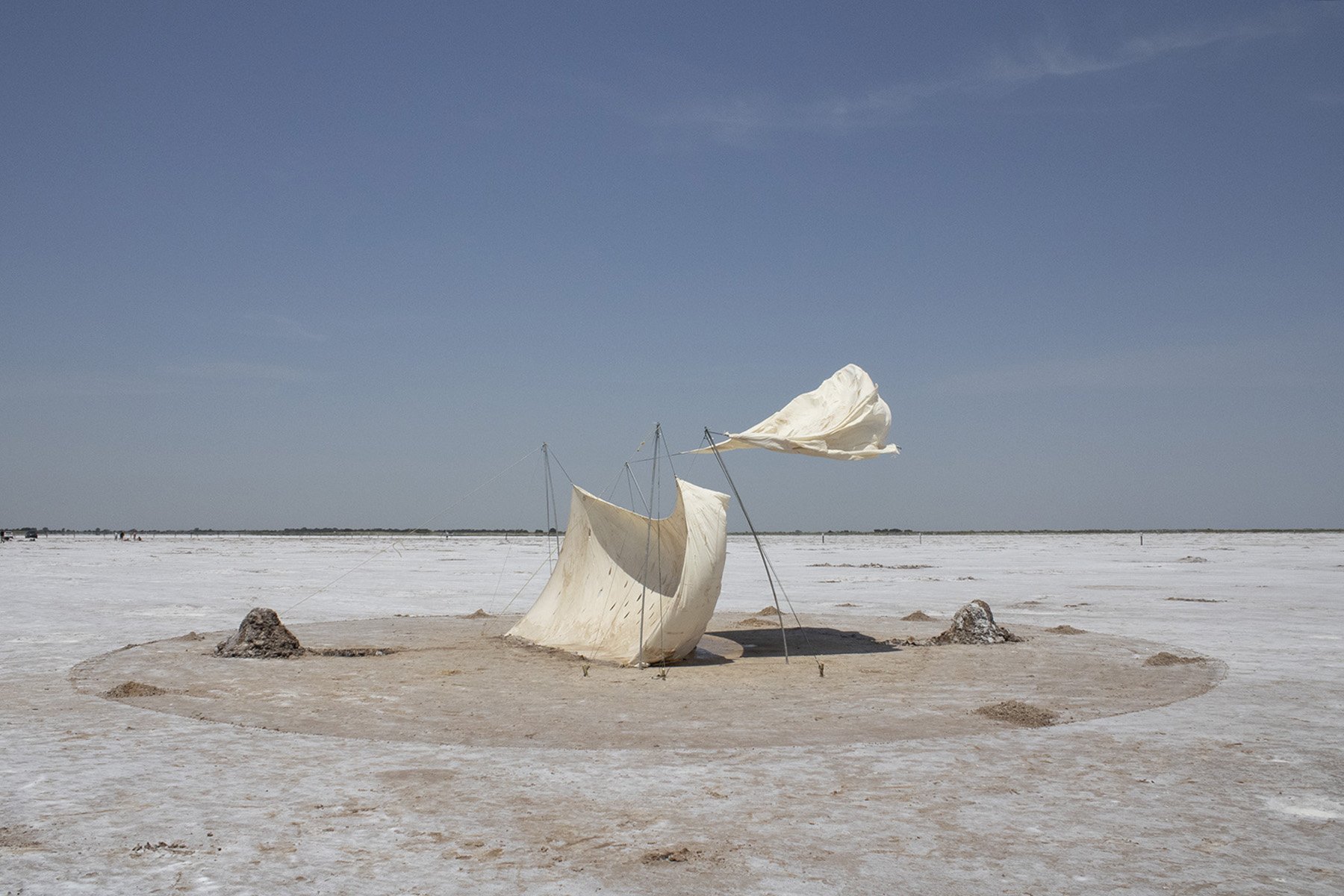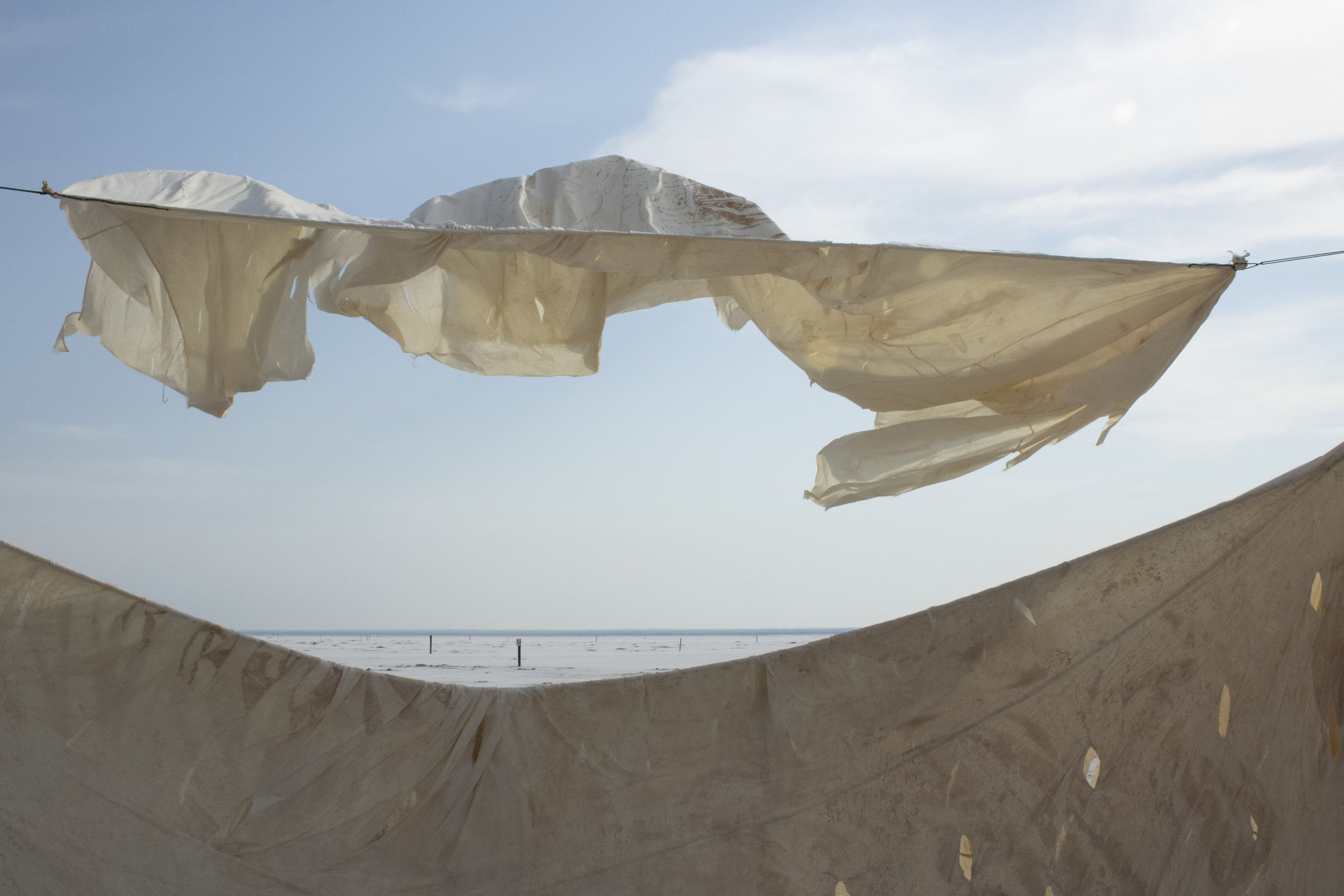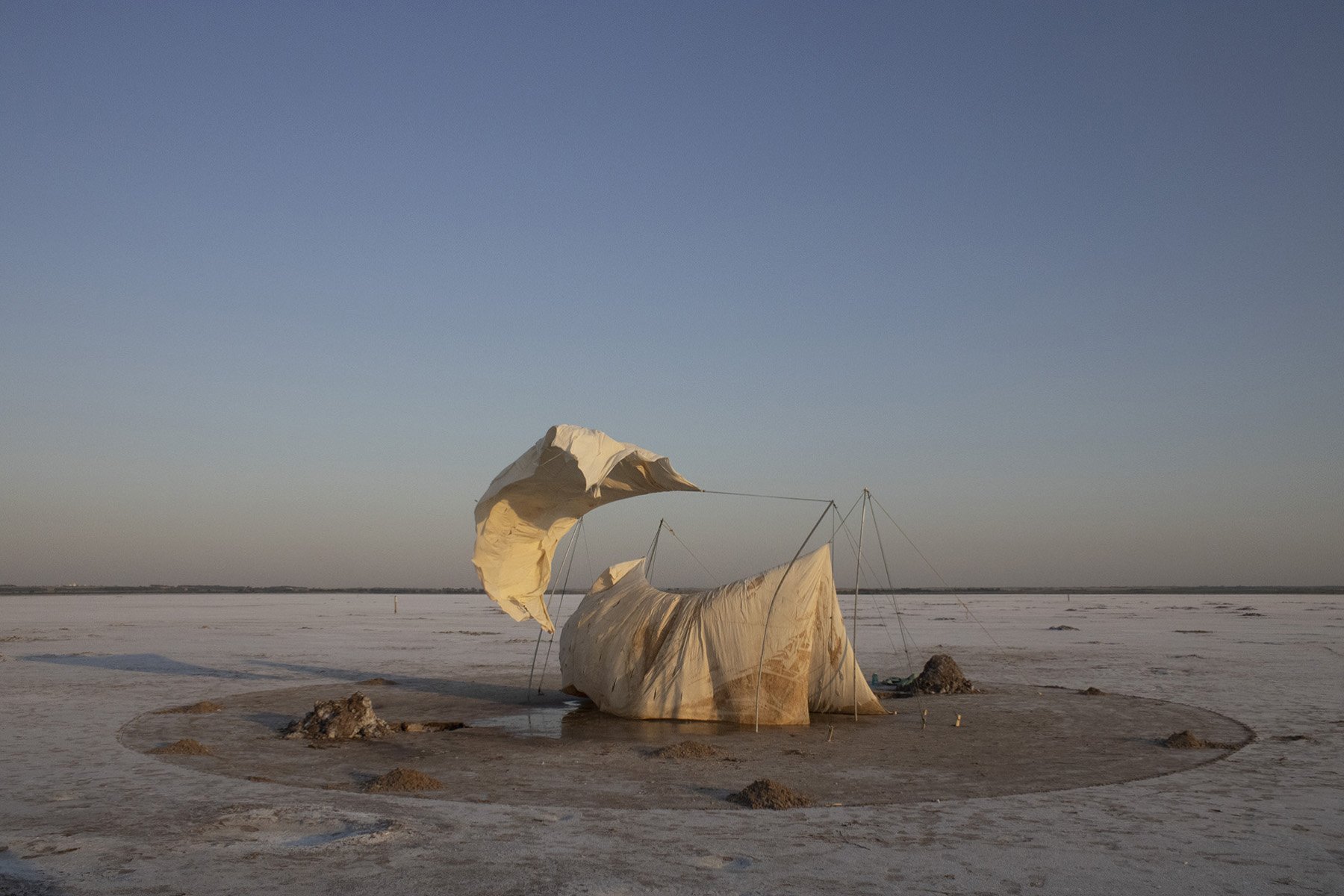DVAA Member since 2022
Viola Bordon
Artists Website:
About:
Viola is a Philly-based sculptor and fiber artist. She has an MFA from the University of Pennsylvania and a BFA from Washington University in St. Louis.
Artist Statement:
Thrown by the ocean. Can’t breathe. Salt in nose. Disoriented. Shoulder scrapes. Panic. Lost control. Wave passes. Feel floor. Stand up. Gulp air. Relief. Another wave.
A body moved, not by its own accord but by something else. The environment is powerful and unpredictable, causing humans to negotiate our role within it. Our inability to control it establishes the need for boundaries. The intermediates that come from this need are seen in clothing and shelter. Stand-ins are torn to shreds by the elements so that we are not. Here cloth is a mediator. A translator between us and the cycles of the world.
If the landscape has its own rhythms, systems, and ideas, then jumping into a conversation that it instigated is simply joining for a brief moment. Landscapes are not stagnant. They move, breathe, and pulse. This movement is complex, with layers upon layers of interconnectedness. This is not a performance. The landscape is not still. The notion of movement establishes an exchange and is crucial to my understanding of nature. The lamp on my desk is made from a painted metal base, fiber and plastic shade, rubber-coated metal wires, glass, filament bulb, and felt foot. Each of those items was harvested, transported, refined, transported, constructed, transported, assembled, transported, sold, transported, and ends up here by me. Displacement always leaves traces and causes change. In the same way, the physical history of a product can be seen in its final form, the physical shifting in ecological cycles can be seen in their habitats. Traces of displacement like stains, tears, and residues point towards the original action, and these signs indicate fluctuation within a landscape. In Bet, I stitched a form that would be hardened by salt and collaborated with the salt to make it stand. I followed that salt to a source, a salt flat in Jet, Oklahoma, where it cycles through an ecosystem. That ecosystem has incredibly high winds, so the tent I installed became a sail, funneling wind to form a flag. That flag became our shade from the sun, and the sail crusted. The final object reflected both the temporary wind shifts and the much slower salt creep of that site.
My interest is to make one intervention in a site, occupying it with a material to act as a frame for the ongoing dialogue. In the transfiguration of my material, it becomes a mirror or photograph. I use materials that allow us to “read” the landscape, not for the data and information it proposes (weather, seismology, wind force...) but for the intrinsic layered dynamics that can expound on themselves. I hope to collect not to hoard, but to receive what the site has to offer in a visual dialogue. I invite an understanding of the language of fluctuation that the landscape relies on. This is why the fluidity of materials is important, it allows for the motion to be transfigured in color for just a fraction of time. Then the understanding of the displacement can linger.


